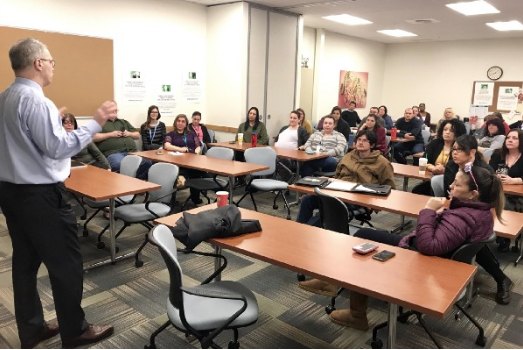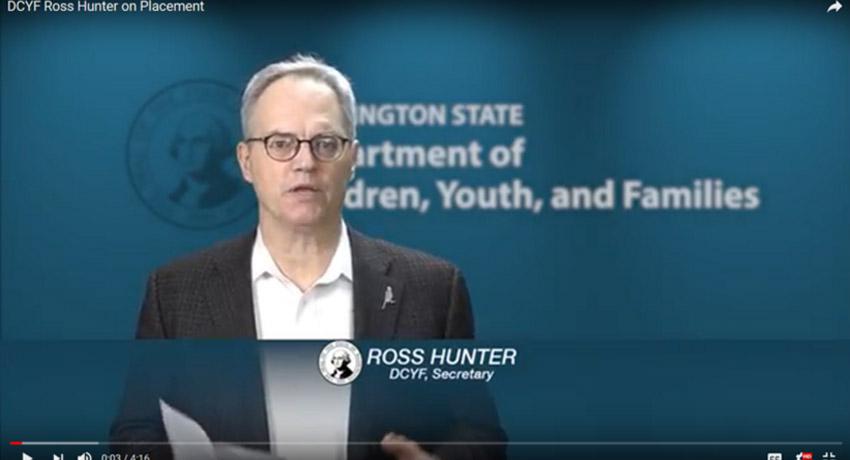Over the past few months, I’ve visited a number of Children’s Administration offices while on my tour of the new DCYF offices. Two chronic problems the agency faces have become clear to me during these visits — high turnover among caseworkers and a severe shortage of foster homes. I realize these are issues that many of you have been wrestling with for some time and I don’t presume to have solutions to offer at this point. We have more research to do to have da clear understanding of these issues. But the outline of them as perceived by our staff is also clear: they are so closely intertwined that determining causality is hard. Read below for my take on what I’ve learned so far, or watch this video of me exploring these problems.
- Turnover. Caseworker turnover was over 23 percent. As with all averages, some offices had a higher number and some lower. We’ll do more work to understand this in detail and make changes to reduce this to a manageable number. While I understand turnover is an issue for child welfare agencies in other states as well, Casey Family Programs suggest a more reasonable turnover rate would be 12 percent, nearly half today’s rate.
- Placement. We have a severe shortage of appropriate placements for children removed from their home due to safety concerns, in particular for children who have specialized needs. We will look into whether this may have been exacerbated by recent policy and/or budget decisions, and whether we can make improvements to address the shortage.
Turnover affects everything. Changing the caseworker during a case can sometimes means it takes us longer to achieve permanency. For a young child, this “longer” can feel like “forever.” Having too many new caseworkers often means caseloads are shifted to more experienced workers, causing them to burn out, making the problem worse. Almost everything we do is negatively affected by turnover.
Today I’m conveying my thoughts about the placement crisis. I’ll come back to turnover as I dig into its statistical underpinnings. All of this is observational, meaning I’m extracting it from what I’m hearing anecdotally from our staff, and not from a detailed look into the data. We’ll empirically validate the lived experience of our workers before taking big actions, but here’s the story:
Demand is up. The arrival rate of new cases is increasing faster than our staff can accommodate the growth. In addition, the severity of cases we’re seeing seems to be getting worse. Some external evidence suggests this may be due to the opioid epidemic. We shift resources to the front end of the system to do investigations, leaving fewer staff to handle the cases that wind up in dependencies. It’s also taking longer to resolve dependency cases, creating new demand for services.
Centralized placement. We changed policy a number of years ago to move to a centralized placement desk. This was an attempt (that worked) to make better use of open placement options. For example, if we have a child in Tacoma who needs a home and an open home in Port Angeles, we might place the child there. This wouldn’t have happened without the centralized desk knowing about the open home in Port Angeles. This has had some unintended side effects.
- We have a less personal relationship with foster homes. Foster parents also don’t really have a local person to call with concerns or complaints. This may lead to a perceived acceleration in the “retirement” of foster homes.
- Staff perceive that visitation is vastly more difficult to manage over long distances. The vendors often won’t take these cases and judges threaten contempt against our workers if we don’t drive the children to very distant visitation appointments. We’re going to want to look at the distribution of distance between placements and the parent’s home over time.
- Filling up local placement resources with children from far away makes those homes unavailable for local placements. Over time this will result in a diffusion of children to more distant locations.
One-night placements. This is more of an issue in certain areas. It is clearly not good for children to be moved every day; this could make a child feel unwanted and exacerbate challenging behaviors.
Inadequate group home availability. We’re close to the top of the list of states for the number of children placed in family homes instead of in congregate care, which is a good thing. However, there are some children we’re struggling to place who are pretty difficult to make stable in a family home. There are complex reasons for this related to rates and some external factors. We also have almost 70 children placed in out-of-state group homes. In limited circumstances, these placements are the best option for some children, but for many it would be better to have an in-state placement.
This has to get better and soon.
I’m aware of a couple efforts to improve these situations, such as fully digitizing the sign-up process for foster parent applications (as San Francisco has done) and funding for forecasting the BRS population, which would increase the funding for this service as the need grows. CA has already begun to evaluate the centralized placement desk model in order make recommendations for improvements, and I intend to build on that work.

On the placement centralization front, I want to look at the data and see if the perceptions of the staff in the field are capturing everything that’s going on. As we move forward toward the July 1, 2018 merger date, we want to avoid taking structural risks we don’t need to. We’re going to think about how processes like this work, now that pressures caused by the Great Recession have eased.
If I’m missing key pieces from my meetings with you please let me know.
Regards,
Secretary Ross Hunter

